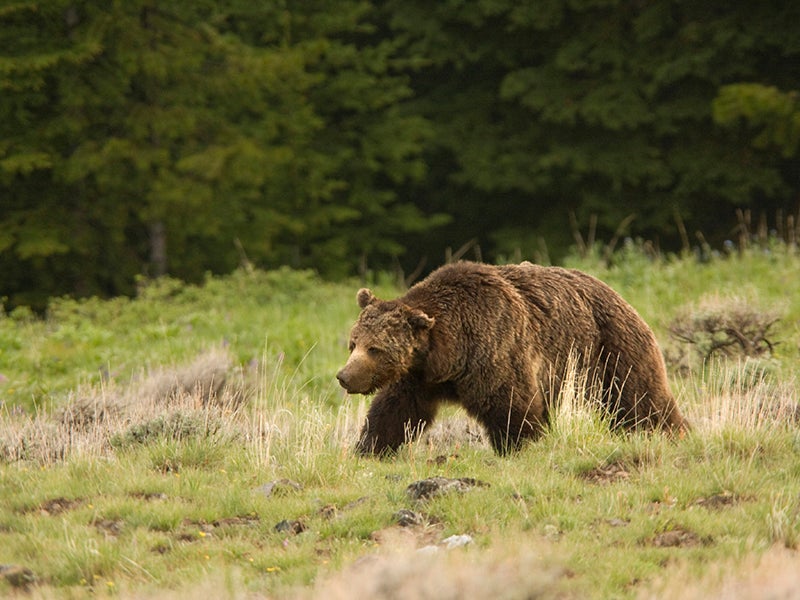Endangered Species Act Is Working
Wyoming Gov. Matt Mead has launched his yearlong term as chairman of the Western Governors Association by attacking the Endangered Species Act.

This page was published 8 years ago. Find the latest on Earthjustice’s work.
Wyoming Gov. Matt Mead has launched his yearlong term as chairman of the Western Governors Association by attacking the Endangered Species Act. During a two-day workshop in Cody last week, Mead declared the act a failure and called for legislative reforms.
That may be good politics in a state government dominated by segments of the agricultural and energy industries that frequently oppose wildlife protections, but Mead’s complaint offers no legitimate basis for undoing our nation’s premiere wildlife preservation law.
In fact, when measured against its core mission of preventing extinctions, the Endangered Species Act has been an overwhelming success. Out of 2,200 species protected under the Endangered Species Act, only 10 have vanished since the act was established—and eight of those were likely extinct before they were protected by the act. In other words, the act has been more than 99 percent successful at preserving our nation’s natural heritage of wildlife for our children and grandchildren.
And that success has come against overwhelming odds. When Congress passed the Endangered Species Act in 1973, the global population was 4 billion. Since then, the Earth’s population has grown to approximately 7.2 billion—and counting. The addition of 3.2 billion people brings escalating demands for food, building materials, and energy, all commodities that frequently come at the expense of wildlife habitat.
The ecological footprint for this expanding human population—a measure of how much biologically productive land and sea area (crop and grazing land, forests, fishing grounds and built-up land) is demanded by a given population versus how much is available—has nearly doubled since the Endangered Species Act was passed. In simple terms, human development pressure on wildlife habitat has grown dramatically since 1973.
Mead’s relatively undeveloped state of Wyoming is no exception. The total acreage in Wyoming covered by producing oil and gas leases has grown from 2.3 million in 1985 (the earliest year in which federal data are available) to 4 million in 2014. It’s no wonder that the sage grouse, whose habitat formerly encompassed many of those acres, is imperiled.
Now a steadily heating climate is adding new pressures on wildlife, melting snowy and icy habitats, bleaching corals, drying up wetlands and watercourses, and ushering in massive vegetative changes. Again Wyoming is no exception, and is in fact a poster child, because climate-driven insect infestations have largely wiped out the whitebark pine tree, whose seeds once provided important nourishment for threatened grizzly bears in the Yellowstone region.
Against this onslaught of development pressure and climate change, the Endangered Species Act has performed amazingly well.
Mead ignores this achievement and instead complains that only 30 species the federal government has listed as threatened or endangered since the act’s establishment have been delisted because they have recovered. This “1 percent success rate,” the governor argued, is a sign of failure.
However, in the face of the avalanche of escalating development pressure experienced over the past 40 years, any recovery of an endangered wildlife species is near miraculous. And Mead’s critique is unfair even on its own terms. A recent study found that 90 percent of species listed under the Endangered Species Act are recovering at the rate specified by their federal recovery plans.
Still, Mead complained, some species, such as gray wolves and grizzly bears, have been removed from the act’s endangered list but then had their federal protection restored by court rulings.
However, any blame here does not lie with the Endangered Species Act. Despite the fact that the chance to see wolves and grizzly bears in the wild helps to drive an enormous Wyoming tourism boom that saw a record 4 million visitors in Yellowstone National Park last summer, Wyoming’s political leaders too often treat these species as a burden instead of a benefit. Wyoming’s approach to wolf management, for example, treats wolves as vermin to be shot on sight across approximately 85 percent of the state. In the remainder, Wyoming offers only non-binding handshake agreements with federal officials to supply key conservation measures. That is why a federal judge in 2014 put Wyoming’s wolves back under Endangered Species Act protection.
The fact that the Endangered Species Act prevented Wyoming’s inadequate management plan from jeopardizing a major conservation success story for the entire nation is not a sign that the act is broken. It is a powerful sign that the act is working.
This blog was originally published by the Casper Star Tribune on November 16, 2015.
Tim joined Earthjustice in 2000. Today, he heads the Biodiversity Defense Program. Tim is a recognized expert in public lands, wildlife, and natural resources law whose work has preserved millions of acres of public lands, protected wildlife including grizzly bears and wolves, and ensured sound management of our nation’s natural environment.
Established in 1993, Earthjustice's Northern Rockies Office, located in Bozeman, Mont., protects the region's irreplaceable natural resources by safeguarding sensitive wildlife species and their habitats and challenging harmful coal and industrial gas developments.
